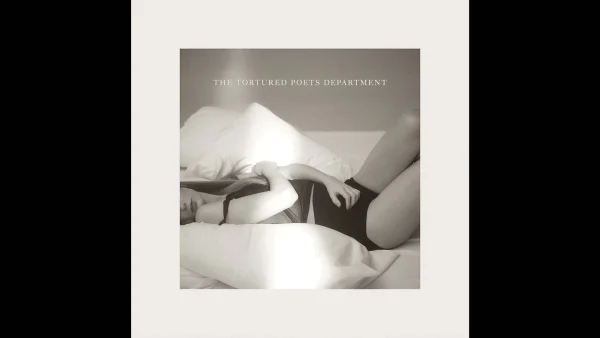The French Revolution’s Smallest Victim

Illustration by Avril Maffei
A dark history, a dark past; a story only revealed and confirmed two centuries later. A heart, so small and full of pain, showing the scars of a world that goes on, regardless of what we do. What happens if a heart has its own revolution? How were historians moved by the story of Louis XVII and his brutal end?
The French Revolution (May 5, 1798-November 9, 1799) was a period of radical political, administrative, and societal changes that led to Robespierre’s Reign of Terror from 1793 to 1794 which later influenced Napoleon’s rule, the First French Empire. During the French Revolution, King Louis XVI and Marie Antoinette were imprisoned and guillotined by revolutionaries led by Robespierre. The unknown part of the story, however, was that their children, 14-year old Marie-Therese, and 8-year old Louis XVII, were kept in prison long after their parents’ death. Marie-Therese would be released in 1795 after surviving her imprisonment and would live well into adulthood, only passing at the age of 72. Louis’s fate however, would differ.
There are two stories that explain what happened to the little boy. The first tells that the 8-year old was locked up in Temple Prison for long periods of time, with no food and no one to take care of him. Only two years later at age 10, little Louis died of tuberculosis, his body filled with tumors, and covered in scabies. The second belief is that the boy who was found dead in that cell was not in fact Louis, but an impostor, and that the Dauphin (title of the eldest son of the King of France) was able to escape. That led to over 100 impostors to the throne, who pretended to be the dead king and queen’s son. It wasn’t until February 2000, that the real story was revealed.
Jennifer Donnelly, Carnegie Medal recipient and author of the acclaimed novel Revolution, tells this hidden story, and explains how Louis’s heart was found amidst the chaos of the French Revolution. The story follows two girls: one who lives in Brooklyn during present day, and has just suffered the traumatic loss of her brother, and the other who has lived in France during the 18th century. Andi, the girl from Brooklyn, travels to Paris, and finds a diary which belonged to the French girl, Alex. What’s inside haunts Andi. Though Alex was a street performer, she found herself tangled within the royal family as she started taking care of Louis XVII. Their stories, though two centuries apart, converge as the past becomes suddenly very real, and very much in the present.
The book explores what would have happened in both cases; whether the Dauphin had survived or withered away, whether the Dauphin lived or met a brutal end, and how according to Donnelly, “History is a Rorschach test (a psychological test in which inkblot perceptions are recorded). What you see when you look at it tells you as much about yourself as it does about the past.” Through history, it is possible to see why things are the way they are, as well as fragments and pieces of what society was like. Looking closely means realizing that the past holds a lot of who we were, and who we will become.
Though Donnelly’s novel delves into both scenarios, the reality is that Louis XVII the Dauphin ended up meeting a brutal end. But how was the heart found? One of the physicians from the palace, Philippe-Jean Pelletan, obtained the heart and stored it in a glass vial filled with alcohol. With time, the alcohol evaporated and Pelletan’s assistant (whose name is not mentioned on records) stole the heart. After some years when the heart reached the possession of the archbishop, Jean-Baptiste-Joseph Gobel, his house was attacked, and a printer called Lescroart found the heart amongst broken glass. It wasn’t until 1975 that the heart was given to the Memorial for France at St.-Denis. In late December of 1999, a small piece of the heart was extracted, and sent to Belgium and Germany to see if the DNA matched with those of Marie Antoinette. The results came back positive, the heart was indeed taken from Louis XVII, who was kept in the dark of a cold and lonely cell.
“Life’s all about the revolution, isn’t it? The one inside, I mean. You can’t change history. You can’t change the world. All you can ever change is yourself”, states Donnelly in Revolution. The Dauphin’s violent end cannot be changed, but there are ways to change ourselves, and understand the different perspectives in a period of time, which are sometimes not hidden, but simply misunderstood. History, even if two centuries ago, is still imperative, for society is ever changing, and perspectives evolve as time goes on.
Would it have been better though to never know the answer to what happened to Marie Antoinette and Louis XVI son? Would it have been better to never know that society is sometimes so cruel it makes everything unrecognizable?
“It goes on, this world, stupid and brutal. But I do not. I do not.”
Sources:
https://www.jenniferdonnelly.com/book/revolution/
https://www.nytimes.com/1999/12/21/world/geneticists-latest-probe-the-heart-of-the-dauphin.html
http://news.bbc.co.uk/2/hi/europe/720214.stm
https://www.atlasobscura.com/places/heart-of-the-dauphin
https://www.washingtonpost.com/archive/politics/2004/06/06/in-france-a-royal-heart-finally-gets-resting-place/0f211906-db12-4529-bb9a-7be1306db1d4/
https://www.goodreads.com/work/quotes/9871439-revolution














